The 3-5-3 defense playbook emphasizes teamwork, confidence, and strategic alignment. It outlines base formations, coverage responsibilities, and blitz packages, supported by diagrams for effective execution and adaptability.
1.1 Overview of the 3-5-3 Defense Formation
The 3-5-3 defense formation features three defensive linemen, five linebackers, and three defensive backs. This setup provides flexibility against both run and pass plays, emphasizing speed and agility. The base alignment includes a nose tackle and two defensive ends, while linebackers are positioned to stop the run and cover underneath zones. Defensive backs focus on deep coverage and supporting the linebackers. This formation excels in creating confusion for offenses due to its versatility in blitz packages and coverage schemes. It is particularly effective against the run, with eight defenders in the box, making it a popular choice for teams with athletic linebackers and defensive backs.

1.2 Importance of Teamwork in the 3-5-3 Defense
Teamwork is the cornerstone of the 3-5-3 defense, as it requires seamless coordination among all eleven players. The formation’s success hinges on each player understanding and executing their specific role, ensuring gaps are filled, and responsibilities are shared. Defensive linemen must occupy blockers to free up linebackers, who in turn must read plays quickly and flow to the ball. Defensive backs provide the last line of defense, supporting the front with proper coverage. Communication is vital, as misalignments or missed assignments can lead to explosive plays. Trust and accountability among players are essential for this defense to function effectively, making it a true team effort rather than individual heroics.
1.3 Key Concepts: Confidence, Concentration, Composure, Courage, and Commitment
The 3-5-3 defense relies on five critical traits: confidence, concentration, composure, courage, and commitment. Confidence ensures players trust their abilities and decisions. Concentration keeps them focused on assignments and reads, even amid chaos. Composure allows them to remain calm under pressure, making split-second decisions. Courage drives players to confront physical challenges head-on. Commitment binds the team together, fostering discipline and accountability. These qualities, cultivated through practice and repetition, create a cohesive unit capable of executing the defense effectively and adapting to any situation. They are the foundation upon which the 3-5-3 defense is built and sustained.
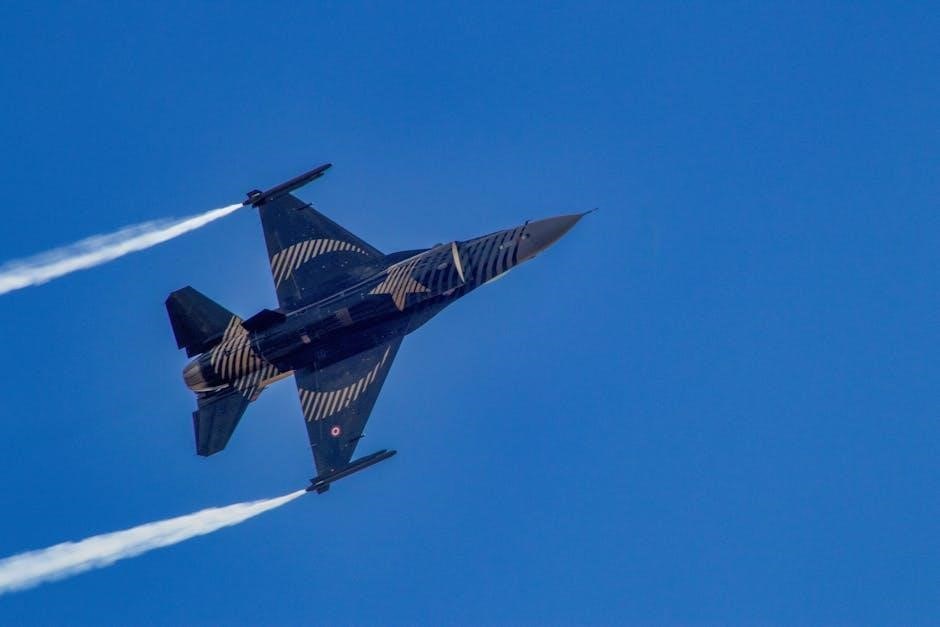
Base Defense Alignment and Fronts
The 3-5-3 defense begins with a base alignment featuring three defensive linemen, five linebackers, and three defensive backs. This setup provides flexibility against both run and pass threats, balancing strength and coverage capabilities effectively.
2.1 Positioning of Defensive Linemen
In the 3-5-3 defense, defensive linemen are positioned to occupy blockers and create gaps for linebackers to attack. The nose guard typically aligns in the 0-technique, directly over the center, while the defensive tackles use the 3-technique, shading the guard’s outside shoulder. This setup allows the linemen to control the interior and funnel runs to the linebackers. Adjustments may include shifting to a 4-technique for better edge control or slanting to disrupt the offense’s blocking scheme. Proper alignment ensures the defensive line can effectively penetrate or occupy, freeing linebackers to make plays.
2.2 Alignment of Linebackers
In the 3-5-3 defense, linebackers are positioned to maximize their ability to read and react to the offense. The middle linebacker (MIKE) aligns behind the nose guard, typically in a 4-6 yard depth, to read the offensive line’s movement. The outside linebackers (WILL and SAM) position themselves on the edges, often at a 45-degree angle to the line of scrimmage, prepared to contain the run or rush the quarterback. Their alignment may shift based on the offense’s formation, with the SAM linebacker often aligning closer to the tight end. Proper alignment ensures they can effectively fill gaps and cover receivers.
2.3 Responsibilities of Defensive Backs
In the 3-5-3 defense, defensive backs play a pivotal role in balancing pass coverage and run support. The three defensive backs typically consist of two cornerbacks and one safety. Their primary responsibilities include covering receivers, supporting linebackers in stopping the run, and providing deep coverage to prevent long completions. The cornerbacks usually align to cover wide receivers, either in man-to-man or zone schemes, while the safety acts as a last line of defense, often directing the secondary and making crucial decisions to support both run and pass defense. Additionally, defensive backs may participate in blitz packages to pressure the quarterback, especially when the front eight focus on stopping the run. Effective communication and coordination between the defensive backs and linebackers are essential to maintain coverage integrity and address offensive strategies like spread formations. Their versatility and adaptability are key to the defense’s success, ensuring they can handle both pass coverage and run support responsibilities effectively.
Coverage Responsibilities
The 3-5-3 defense emphasizes zone and man-to-man coverage, with defensive backs and linebackers sharing responsibilities to protect against deep passes and underneath routes effectively.
3.1 Zone Coverage in the 3-5-3 Defense
Zone coverage in the 3-5-3 defense involves defensive players covering specific areas of the field rather than individual receivers. The three defensive backs typically divide the secondary into deep zones, while linebackers and defensive linemen cover underneath areas. This approach allows for effective pass defense by ensuring all regions of the field are protected. Players must communicate and react quickly to the offense’s play to maintain coverage integrity. Zone coverage is particularly effective against spread offenses, as it limits big plays and forces offenses to methodically move the ball. Proper alignment and discipline are critical to its success.
3.2 Man-to-Man Coverage Strategies
Man-to-man coverage in the 3-5-3 defense requires defensive backs to match up with specific receivers, disrupting routes and contesting catches. Cornerbacks often play press coverage at the line of scrimmage, while safeties provide deep support. Linebackers may also be assigned to tight ends or slot receivers. The defense relies on quick reactions and tight coverage to limit separation. Communication is key, as defenders must anticipate routes and coordinate efforts. While man-to-man can be effective in disrupting timing-based offenses, it demands disciplined technique and trust in the pass rush to pressure the quarterback.
3.4 Underneath Coverage Techniques
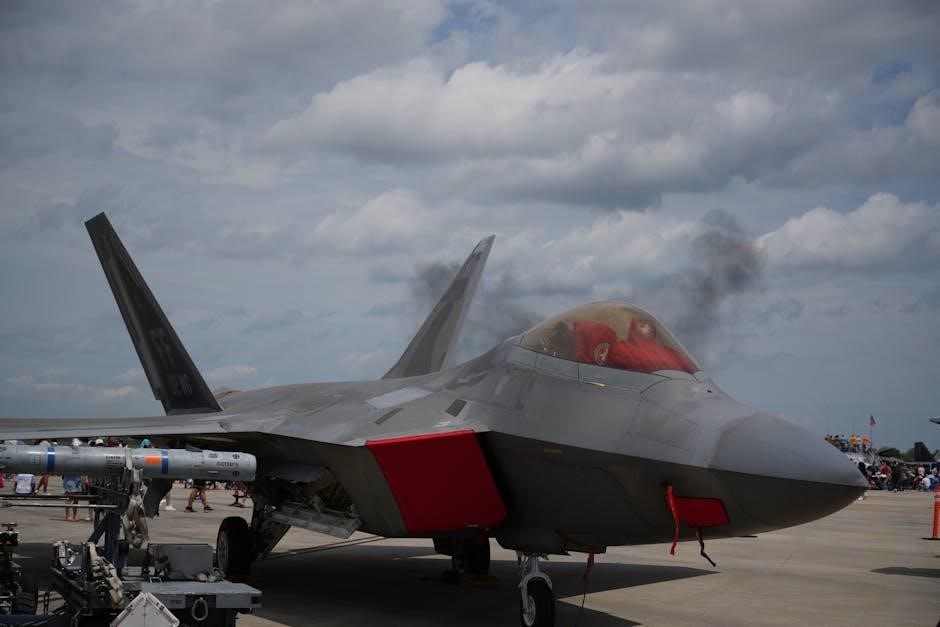
Underneath coverage in the 3-5-3 defense focuses on defending short to intermediate routes and check-down passes. Linebackers and defensive backs are responsible for zone drops, mirroring receivers, and reacting to the ball. Techniques include reading the quarterback’s eyes, anticipating throws, and breaking on the ball quickly. Players must maintain proper depth and leverage to limit yards after the catch. Communication is critical to ensure seamless coverage rotations. Underneath coverage also involves disguising looks to confuse the quarterback, creating opportunities for interceptions or deflections. Proper execution requires discipline, instincts, and the ability to balance underneath responsibilities with deep support.
Blitz Packages and Pressure Schemes
Blitz packages and pressure schemes in the 3-5-3 defense are designed to create chaos and disrupt the offense. By varying blitz angles and timing, defenders can overwhelm the quarterback and force quick decisions, leading to sacks or turnovers. These strategies require precise execution and coordination to exploit weaknesses in the opponent’s protection. Effective blitz packages keep offenses guessing and enhance the defense’s overall impact.
4.1 Linebacker Blitz Techniques
Linebacker blitz techniques are central to the 3-5-3 defense, leveraging their speed and agility to pressure the quarterback. Coaches teach linebackers to time their blitzes perfectly, reading the offense’s snap count and attacking gaps. Techniques include delayed blitzes, where linebackers feint coverage before rushing, and “green dog” blitzes, where they freelance if the quarterback is in a vulnerable position. Proper footwork and hand placement are emphasized to avoid blockers. Effective linebacker blitzes disrupt rhythm, force quick throws, and create turnovers, making them a cornerstone of the 3-5-3 defense’s aggressive philosophy.
4.2 Defensive Back Blitz Strategies
Defensive back blitz strategies in the 3-5-3 defense involve utilizing cornerbacks and safeties to create pressure on the quarterback. Coaches often employ “corner blitzes” and “safety blitzes” to exploit offensive weaknesses. Cornerbacks typically blitz from the edge, aiming to disrupt the quarterback’s timing, while safeties may blitz through designated gaps. Proper timing and coordination with linebackers are crucial to avoid coverage gaps. Defensive backs must read the offense’s formation and quarterback’s drop depth to execute blitzes effectively. These strategies add unpredictability and force quick decisions, enhancing the defense’s ability to create turnovers and disrupt rhythm.
4.3 Combination Blitzes for Maximum Pressure
Combination blitzes in the 3-5-3 defense involve synchronized blitzing from multiple defenders to overwhelm the offense. These blitzes often feature linebackers and defensive backs attacking from different angles to create chaos; For example, a linebacker may blitz up the middle while a cornerback attacks the edge, forcing the quarterback to make a quick decision. Coaches design these schemes to exploit offensive weaknesses, such as slow lineman reactions or quarterback indecision. Timing and coordination are critical, as misexecution can leave coverage gaps. When executed properly, combination blitzes can lead to sacks, turnovers, and disrupted offensive rhythm, making them a powerful tool in the 3-5-3 playbook.
Strengths and Weaknesses of the 3-5-3 Defense
The 3-5-3 defense excels against the run with its strong front but can be vulnerable in pass coverage, especially against deep routes and speedy receivers.
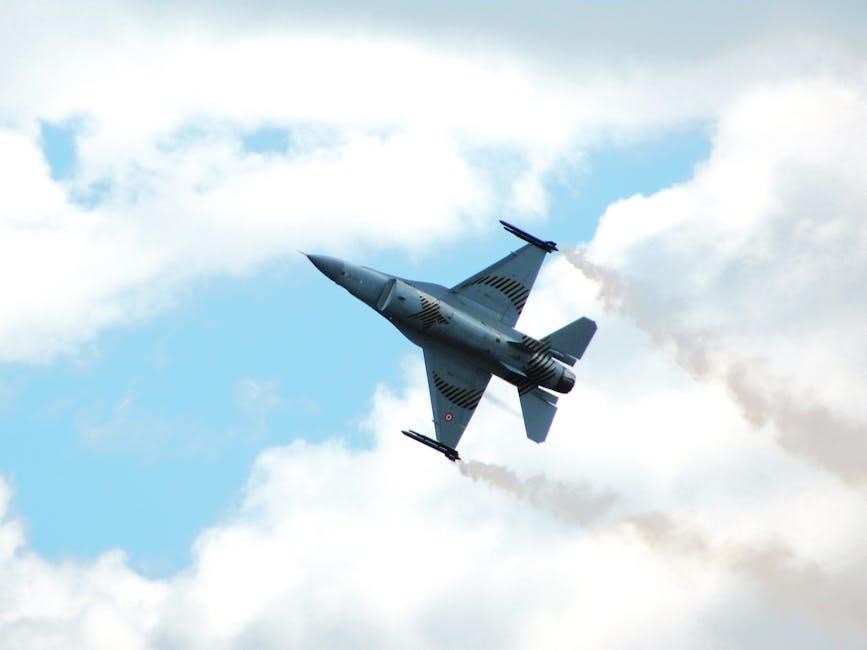
5.1 Advantages Against the Run
The 3-5-3 defense is highly effective against the run due to its strong front and ability to occupy blockers. The three defensive linemen create a physical presence, often commanding double teams and freeing up linebackers to make tackles. The middle linebacker, in particular, has a clear path to the ball carrier, while the outside linebackers can seal the edges. Additionally, the defensive backs provide secondary support, filling gaps and preventing big plays. This alignment allows for consistent stopping power against both inside and outside running attacks, making it a reliable choice for teams focused on shutting down the run game.
5.2 Vulnerabilities in Pass Coverage
The 3-5-3 defense can struggle in pass coverage due to its emphasis on stopping the run. With only three defensive backs, deep coverage can be vulnerable, especially against multiple receiver sets. The linebackers, often tasked with underneath zones, may struggle to match quicker receivers. Additionally, the defense can be exposed on long passes if the secondary fails to maintain proper alignment. Man-to-man coverage can also be risky if corners are not skilled in press or trail techniques. These weaknesses make it critical to mix coverages and rely on pressure to disrupt timing in passing situations.
5.3 Situational Effectiveness
The 3-5-3 defense excels in specific game situations, particularly in short-yardage and goal-line scenarios, where its strength against the run is advantageous. It also thrives in third-and-long situations, as the pressure packages can disrupt the quarterback’s rhythm. However, its effectiveness diminishes in obvious passing situations or against spread offenses with multiple receivers. The defense must adapt by mixing coverages and blitzes to counter these challenges. Its situational versatility makes it a valuable scheme when tailored to the game’s flow and opponent’s tendencies, allowing coaches to leverage its strengths while mitigating vulnerabilities in critical moments.
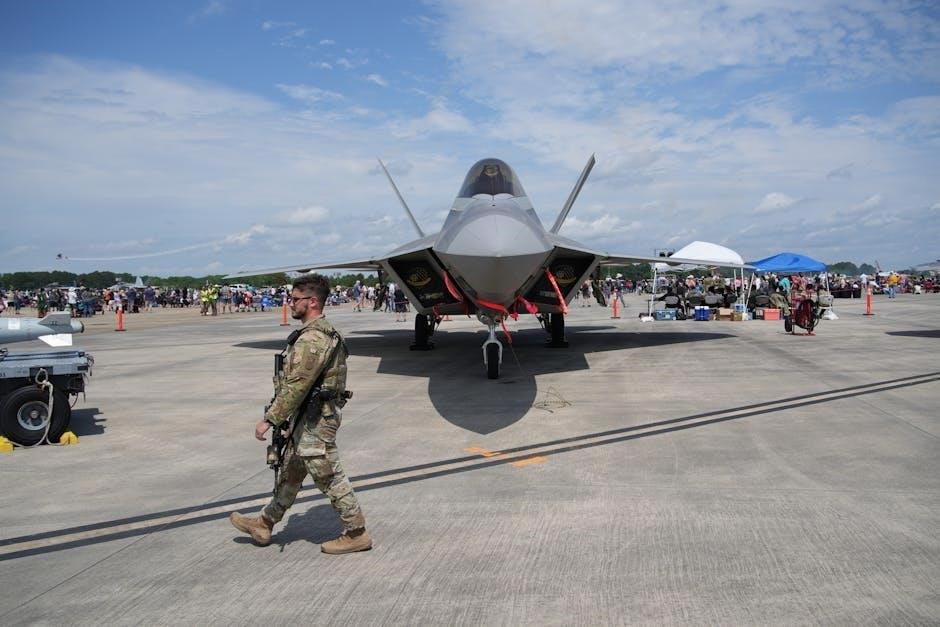
Coaching and Implementing the 3-5-3 Defense
Coaching the 3-5-3 defense requires emphasizing fundamentals, alignment, and communication. Break down complex strategies into manageable parts, focusing on player execution and adaptability during practice sessions.
6.1 Teaching Defensive Alignments and Fronts
Teaching defensive alignments and fronts in the 3-5-3 defense begins with understanding each player’s role and positioning. Emphasize proper stance, footwork, and gap responsibilities for linemen and linebackers. Use visual aids to illustrate base alignments and various fronts, such as the “50,” “60,” and “70” techniques. Stress the importance of reading offensive formations and adjusting alignments accordingly. Assign drills to practice shifting and sliding into different fronts seamlessly. Ensure players understand how to balance aggressiveness with discipline to maintain defensive integrity. Repetition and feedback are key to mastering these fundamental concepts effectively.
6.2 Drills for Improving Teamwork and Execution
Drills are essential for refining teamwork and execution in the 3-5-3 defense. Start with alignment and assignment drills to ensure players understand their roles. Use partner and group tackling drills to improve coordination and communication. Incorporate reaction drills, such as snap-count reactions, to enhance timing and discipline. Implement pursuit drills to teach players how to swarm to the ball. End with live scrimmage situations to simulate game conditions and test execution under pressure. These drills foster unity, accountability, and precision, ensuring the defense operates as a cohesive unit. Consistent practice builds trust and elevates overall performance.
6.3 Adjusting the Defense Based on Opponent Strengths
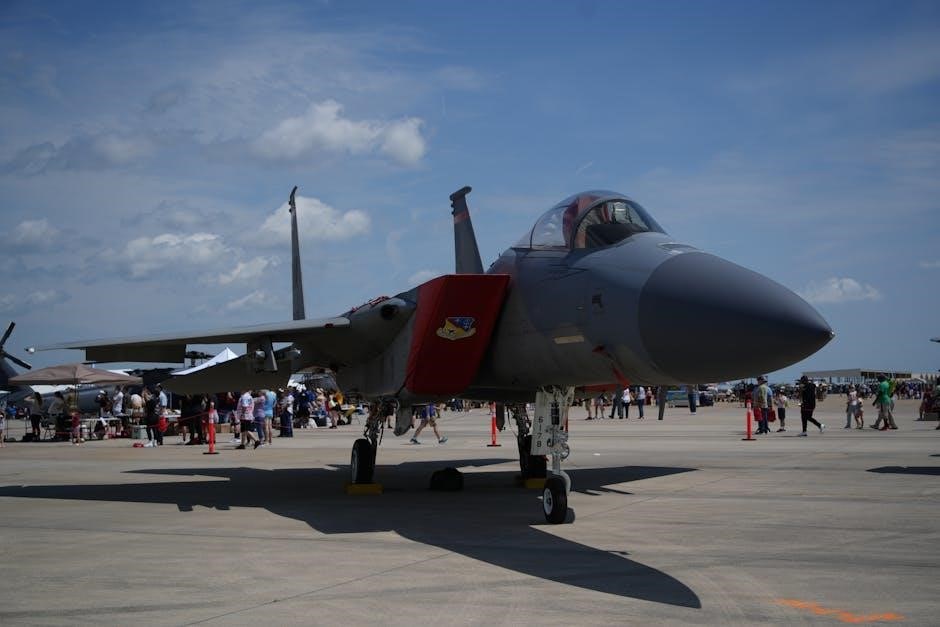
Adjusting the 3-5-3 defense requires analyzing opponents’ strengths and tailoring strategies accordingly. For run-heavy teams, emphasize stacking the box and shifting linemen. Against pass-oriented offenses, increase defensive back support and use press coverage. Study opponents’ tendencies to anticipate formations and plays. Utilize film study to identify key players and exploit weaknesses. Adjust blitz packages to target quarterbacks’ blind spots or attack gaps in protection. Shift linebackers and defensive backs pre-snap to counter alignment mismatches. Flexibility in the 3-5-3 allows coaches to adapt without compromising the base scheme, ensuring effective responses to varied offensive strategies.

Case Studies and Success Stories
Teams at various levels have successfully implemented the 3-5-3 defense, achieving significant improvements in stopping opponents and boosting overall performance. Real-world examples highlight its effectiveness.
7.1 High School Teams That Excelled with the 3-5-3 Defense
Several high school football teams have achieved remarkable success by adopting the 3-5-3 defense playbook. For instance, Lincoln High School reduced its points allowed per game by 40% after switching to this formation. Similarly, Springfield High School, facing strong running teams, saw a significant drop in rushing yards allowed. The playbook’s emphasis on gap discipline and linebacker play proved pivotal. These teams attributed their success to the defense’s flexibility and ability to stop both the run and pass effectively. Coaches praised the system’s simplicity and adaptability, making it a cornerstone of their defensive strategy. Its effectiveness inspired other programs to adopt it.
7.2 Youth Football Teams That Benefited from the 3-5-3 Formation
Youth football teams have also found success with the 3-5-3 defense, as it simplifies assignments for younger players. The Junior Wildcats, for example, improved their defensive ratings significantly by focusing on gap responsibility and basic coverage. Similarly, the Pee Wee Panthers reduced their points allowed per game by emphasizing tackling and pursuit angles. The formation’s flexibility allowed coaches to teach fundamental defensive principles while adapting to the skill levels of younger athletes. Teams reported better execution and confidence, making the 3-5-3 an ideal foundation for building defensive skills at the youth level.
7.3 Coaches’ Testimonials and Experiences
Coaches who have implemented the 3-5-3 defense rave about its effectiveness. One high school coach noted, “The 3-5-3 simplified our defensive assignments, allowing players to focus on execution.” Another coach highlighted its adaptability, stating, “We tailored the formation to our personnel, and it transformed our defense.” Many coaches appreciate how the system emphasizes teamwork and discipline. A youth coach shared, “The 3-5-3 helped us build a competitive defense with limited depth.” Testimonials consistently praise the formation’s ability to stop the run and confuse offenses while fostering player confidence and accountability. Coaches at all levels recommend mastering the 3-5-3 for long-term success.
Diagrams and Visual Aids
Diagrams illustrate base alignments, coverage schemes, and blitz packages, providing clear visual guides for players and coaches to master the 3-5-3 defense playbook effectively.
8.1 Base Alignment Diagrams
Base alignment diagrams in the 3-5-3 defense playbook PDF provide a clear visual layout of the defensive linemen, linebackers, and defensive backs. These diagrams detail the positioning of the three down linemen, five linebackers, and three defensive backs, ensuring proper gaps and responsibilities are understood. They often include annotations to highlight key alignments, such as the nose tackle’s zero-technique position, the inside linebackers’ depth, and the corners’ press or off coverage. These visuals are essential for teaching players their assignments and ensuring consistency in pre-snap alignment. Coaches use these diagrams to emphasize proper spacing and reads, making them a cornerstone of the playbook’s instructional material.
8.2 Coverage and Blitz Package Illustrations
Coverage and blitz package illustrations in the 3-5-3 defense playbook PDF visually depict how defenders execute pass coverage and pressure schemes. These diagrams detail zone and man-to-man coverage assignments, showing the responsibilities of linebackers and defensive backs. Blitz packages are illustrated with arrows indicating rush paths, timing, and coordination. These visuals help players understand complex assignments and alignments. They also show how to adapt coverage based on formations and motion. Coaches use these diagrams to teach execution, ensuring players recognize their roles in disrupting offenses. The illustrations are crucial for pre-game preparation and in-game adjustments, enhancing defensive effectiveness and coordination. They simplify complex strategies for players at all levels.
8.3 Stunts and Pressure Package Visualizations
Stunts and pressure package visualizations in the 3-5-3 defense playbook PDF provide detailed diagrams of defensive line and linebacker movements. These illustrations show slants, loops, and twists, highlighting how players attack gaps and create pressure. Arrows and symbols indicate timing and coordination between defenders. The visuals clarify complex stunts, making it easier for players to understand their assignments. Coaches use these diagrams to emphasize timing and execution, ensuring defensive linemen and linebackers work in unison. These visualizations are essential for teaching how to disrupt offensive blocking schemes and generate pressure on the quarterback effectively in game situations. They simplify intricate strategies for better player execution.

Adaptations for Different Levels of Play
The 3-5-3 defense playbook PDF offers tailored adjustments for youth, high school, and college teams, ensuring flexibility for varying skill levels and roster sizes while maintaining effectiveness.
9.1 Simplified 3-5-3 for Youth Football
The 3-5-3 defense playbook PDF simplifies the formation for youth football by reducing complexity and focusing on basic assignments. It emphasizes fundamental defensive skills like tackling, alignment, and reaction. Coaches can use visual drills to teach young players how to read offenses and communicate effectively. The scheme prioritizes teamwork over individual complexity, allowing players to build confidence and instincts. Simplified blitz packages and coverage concepts are introduced gradually, ensuring a progressive learning curve. This approach helps young athletes develop a strong defensive foundation while keeping the game enjoyable and engaging.
9.2 Advanced Strategies for High School and College
For high school and college teams, the 3-5-3 defense playbook PDF incorporates advanced strategies to exploit offensive weaknesses. Complex blitz packages, such as delayed linebacker blitzes and defensive back pressures, are designed to disrupt the quarterback’s rhythm. Coverage schemes are refined with pattern-matching zones and hybrid techniques, allowing defensive backs to adapt dynamically. Stunts and slant techniques are emphasized to create chaos in the offensive line. Situational defenses, like dime packages for third-and-long, are also integrated. These strategies demand higher athleticism and execution, making the 3-5-3 formation a versatile and competitive choice at higher levels of play.
9.3 Adjustments for Teams with Limited Personnel
Teams with limited personnel can modify the 3-5-3 defense playbook PDF by simplifying schemes and reducing complexity. Focus on core defensive principles like gap integrity and basic coverage. Reduce the number of blitz packages and rely on base fronts to minimize confusion. Emphasize fundamental execution over advanced strategies. Use fewer substitutions to keep players fresh and avoid mismatches. Cross-train athletes to play multiple roles, ensuring versatility. Prioritize situational effectiveness over elaborate play designs. This approach allows teams to remain competitive while managing roster constraints effectively.

Mastering the 3-5-3 defense playbook PDF requires dedication and adaptability. Its flexibility suits various team needs, making it a valuable asset for coaches seeking strategic excellence. Keep evolving and leading with confidence.
10.1 Summary of Key Concepts
The 3-5-3 defense playbook PDF emphasizes a balanced approach, combining strength against the run with flexibility in pass coverage. Key concepts include proper alignment of linemen, linebackers, and defensive backs, effective use of zone and man-to-man coverage, and strategic blitz packages. Teamwork, discipline, and adaptability are crucial for success. Coaches should focus on teaching fundamentals, executing assignments, and adjusting schemes based on opponents. This formation excels in stopping the run but requires precision in pass coverage. Proper implementation and player commitment are essential for maximizing its effectiveness at any level of play.
10.2 Encouragement for Coaches to Master the 3-5-3 Defense
Coaches, mastering the 3-5-3 defense playbook PDF requires dedication and patience, but the rewards are immense. This formation offers flexibility and adaptability, allowing teams to excel in various game situations. By committing to its principles, coaches can build a resilient defense that stops the run and pressures quarterbacks. Emphasize proper technique, teamwork, and situational awareness during practice. With consistent effort, players will grow confident and disciplined, leading to improved performance. The 3-5-3 defense is a proven system that, when executed correctly, can transform a team’s defensive identity and elevate its competitiveness.
10.3 Final Tips for Successful Implementation
For successful implementation of the 3-5-3 defense playbook PDF, coaches must emphasize preparation and communication. Ensure players understand their roles and responsibilities in every situation. Focus on film study to identify opponent tendencies and tailor the defense accordingly; Simplify the playbook for younger teams to build confidence and execution. Use visual aids like diagrams to reinforce alignments and assignments. Always practice blitz packages and coverage in game-like scenarios to improve reaction time. Finally, stay flexible and adapt the defense to your team’s strengths while building depth for sustainability. Lead by example and foster a culture of discipline and accountability.
